DLAR consists of 6 main facilities, with the Medical Center consisting of the Main (Animal) facility and 6 smaller centers and suites.
Environmental and Husbandry Standards Maintained in DLAR Facilities (for ARRIVE Guideline use)
DLAR consists of 6 main facilities, with the Medical Center consisting of the Main (Animal) facility and 6 smaller centers and suites.
Environmental and Husbandry Standards Maintained in DLAR Facilities (for ARRIVE Guideline use)
The Medical Center consists of the Central Animal Facility (CAF), the Dental Wing, the Combs Cancer (Animal) Center, and the NHP facility, Experimental Surgery Suite and Sheep Surgical Suite.
The Dental Wing, Combs and the Central Animal Facility are conventionally designed. The facility contains over 50 animal housing rooms totaling 16412 ft2 and support space of 23458 ft2. The facility has conventional, barrier and BSL2 housing capabilities.
Access is controlled via card swipe and iris scan. In order to access the entrances (HSRB, CAF and Combs) each person must have a UK ID badge and be enrolled in the EyeLock system. Access is granted to research staff who are on an active protocol and have animals housed in one of the facilities listed above.
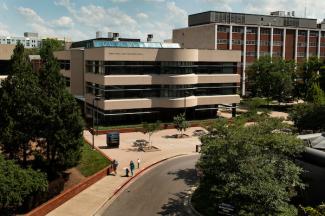
The Sanders Brown Embryo Cryopreservation and Rederivation Core Facility (ECRC) is located on the fourth floor of the Sanders Brown Center for Aging Building. There is a total 5,078 ft2, divided among 5 animal housing rooms, laboratory spaces, support functions and corridors.
The facility operates on a clean/dirty corridor system for all housing rooms except the quarantine holding room. All equipment entering the rederivation barrier rooms is sterilized and all personnel shower and don dedicated clothing.
Movement of animals from the ECRC to research laboratories is unidirectional. Animals entering the ECRC rederivation barrier enter via embryo transfer rederivation. Redervied mouse strains are initially expanded in the ECRC barrier before distribution to the investigators.
ECRC access is controlled via Medical Center identification badges and PINs coded for card readers at three entrances. Permission for key or card access is under the jurisdiction of the Director, DLAR. There are cameras for each entrance and in the corridors.
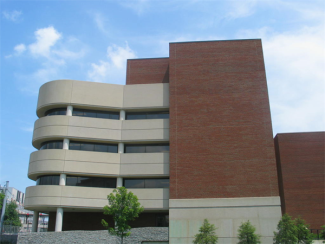
The Biomedical and Biological Sciences Research Animal Facility is located on the basement level of this four-story research building. The facility is contiguous in layout and functions as a single operational unit. The facility contains 23 animal housing rooms totaling 7,093 ft2 and support space of 14,035 ft2 which includes 2475 ft2 procedure & surgery. The facility is conventional in design.
The facility is contiguous in layout and functions as a single operational unit. The facility contains 23 animal housing rooms totaling 7,093 ft2 and support space of 14,035 ft2 which includes 2475 ft2 procedure & surgery.
The facility contains a total of nine animal procedure rooms, a sterile rodent surgical suite, and a necropsy/perfusion room. These rooms are available on a shared and or reservation system to investigators.
Movement of animals outside of the animal facility to laboratories in the BBSRB is restricted. Exceptions to this rule are reviewed by DLAR and the IACUC with permission granted for procedures where the requirement for specialized instrumentation or time critical processing of harvested tissues can be documented.
Building and animal facility access to the Biomedical and Biological Sciences Research Building is controlled via Medical Center identification badges coded for card readers. All animal housing rooms in the animal facility have room level security provided by the Edstrom Watchdog® System and a unique PIN is assigned to users to access individual animal housing rooms.
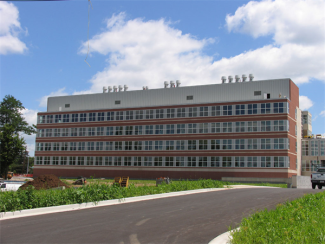
The Multi-disciplinary Science Building Facility (5,844 ft2) is located on the first floor of the Multi-disciplinary Science Building, which is approximately 200 yards from the Medical Center complex.
The facility is designed with a clean/dirty corridor, but it is operated conventionally.
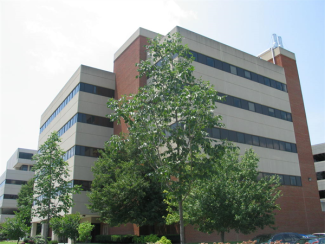
The Biological Pharmaceutical Complex Animal Facility (Lee Todd Building) is located on the basement level of this five-story research building. The facility is contiguous in layout and functions as a single operational unit. The facility contains 13 animal housing rooms totaling 6,319 ft2 and support space of 12,543 ft2 which includes 1,256 ft2 of surgery space.
The facility is conventional in design. The facility contains a total of 13 animal procedure rooms, two sterile rodent surgical suites, and a necropsy/perfusion room. These rooms are available on a shared and or reservation system to investigators. There are also seven designated behavioral rooms, five of which are located within the same corridor. The remaining two are located off the main corridor.
Movement of animals outside of the animal facility to laboratories is strictly limited. Exceptions to this rule are reviewed by DLAR and the IACUC with permission granted for procedures where the requirement for specialized instrumentation or time critical processing of harvested tissues can be documented.
Animal facility access for the Biological Pharmaceutical Animal Facility is both a card reader and PIN access and card reader exit. Building and animal room access is controlled via Medical Center identification badges coded for card readers. There are cameras in the main corridors.

Located on the basement level of this five-story research building. The facility contains 38 animal housing rooms totaling 8,718ft2. Support functions total approximately 9,654 ft2. This facility is contiguous with BBSRB.
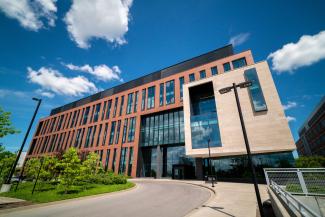
New staff must have completed the Mandatory Education for IACUC, have been cleared through University Health to work with animals, and have been added to an active animal use protocol in Cayuse AO by your Principal Investigator (PI) and have an active UK ID badge. Complete the Request for DLAR Access Form and submit to the DLAR main office in HSRB 204. An additional access request form is needed for Biomedical Biological Sciences Research Building (BBSRB) or Multidisciplinary Science Building (MDSB).
Please see “How to Gain Access to DLAR Animal Facilities” for detailed instructions or visit the DLAR FAQ page for more facts.
All non-University of Kentucky personnel (Visitor, Vendors, and Contractors) entering any DLAR Animal Facility must first go through DLAR Visitor-Vendor-Contractor Orientation (DLAR-TRG-14) and receive the Occupational Health and Safety Information prior to entering into the vivarium area. DLAR Visitor-Vendor-Contractor Orientation (DLAR-TRG-14) is offered Monday thru Friday 1-2 PM. Contact the DLAR Training Group to schedule prior to start of work.
All personnel, without exception, entering the animal facilities must have either a valid UK issued ID badge with a Red DLAR sticker or a temporary UK DLAR Visitors Badge.
Visitors and vendors who have not visited in a year or more must resubmit an Occupational Health and Safety Information Visitor/Vendor form.
Please see the DLAR FAQ page for more information regarding visiting DLAR Facilities.
Place your toes on the line in front of the badge reader/iris scanner.
If you are still having issues, please contact the DLAR business office during regular business hours: 859-323-7132 or 859-323-5885.